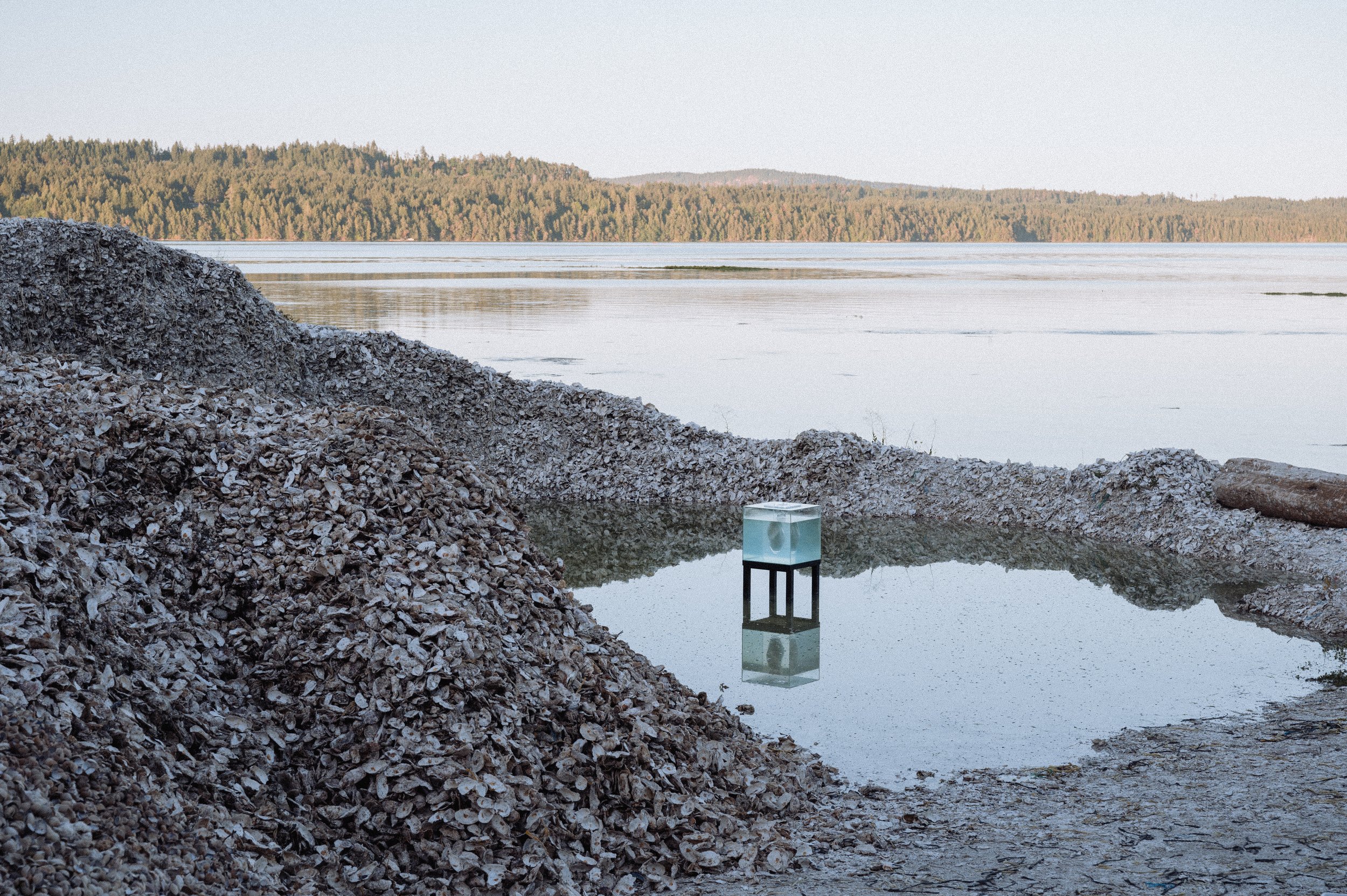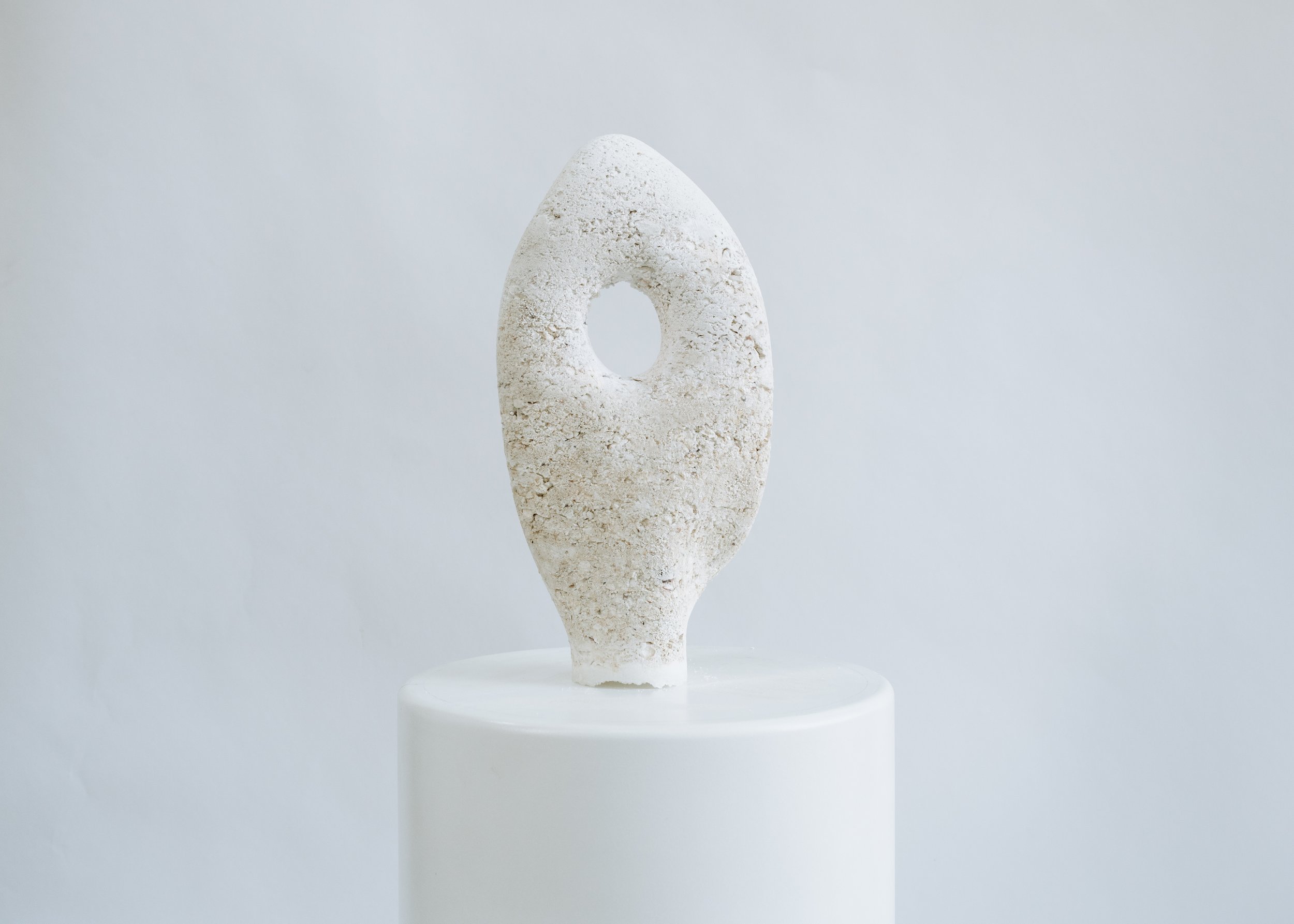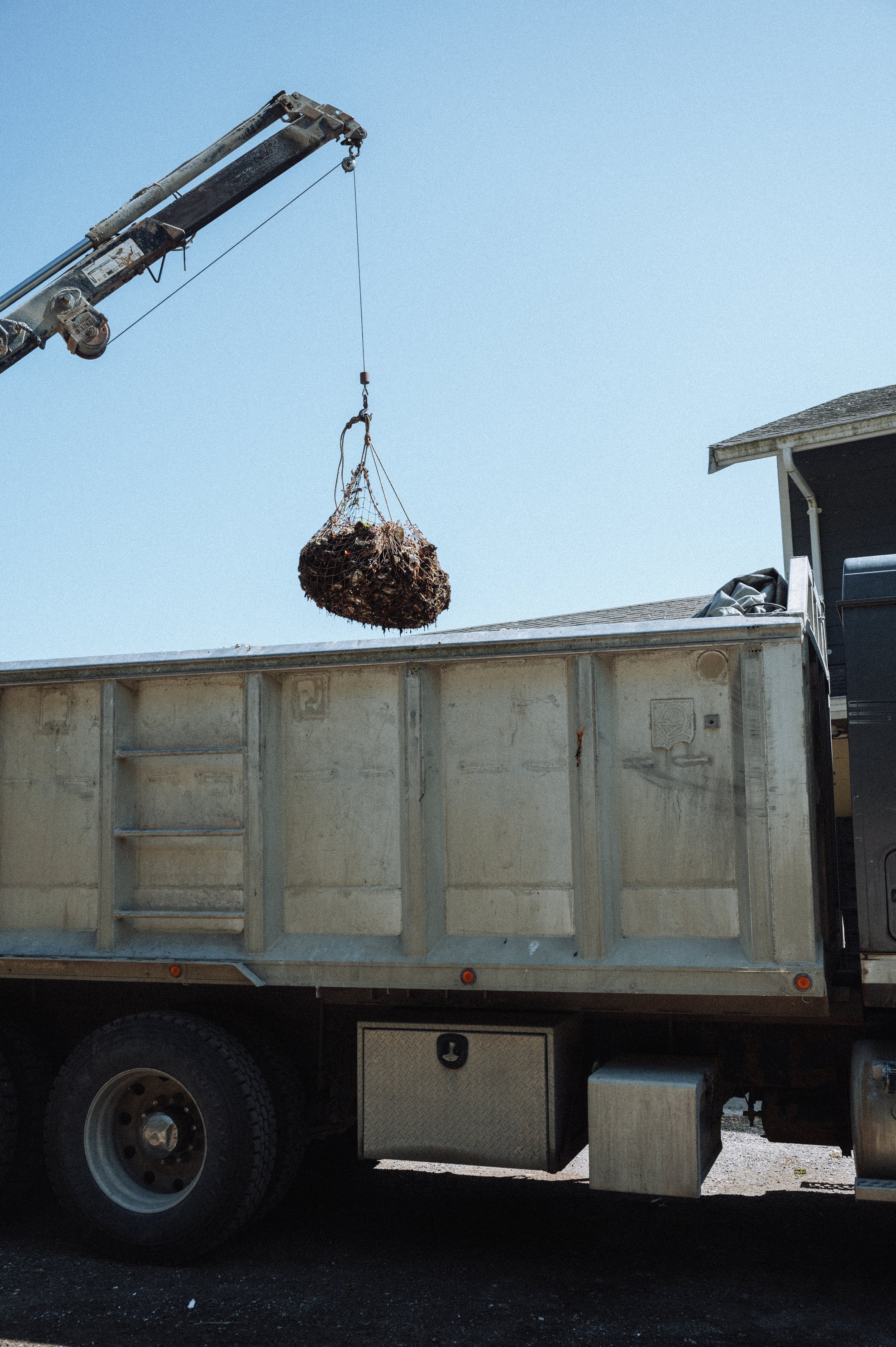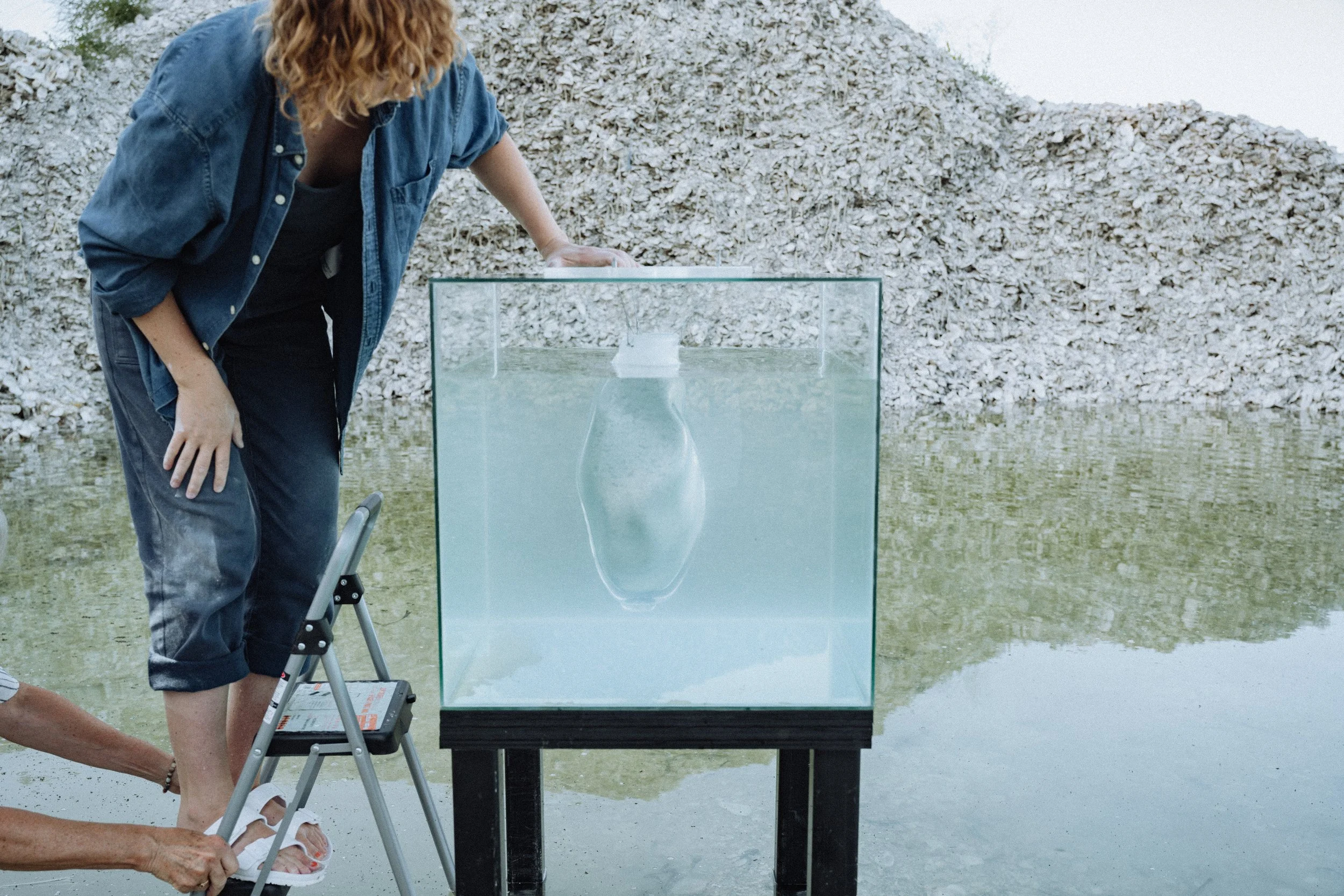Post Luxury
Materials, Research
“What happened to opulence, has materialism been replaced”?
— The Future Laboratory

The oyster is one of the more sustainable and self-sufficient forms of seafood, and as it grows it filters up to 200 litres of water a day. Small amounts of shell itself can be used to combat eutrophication, as a fungicide, as a means of soil amelioration, and exhibits anti-bacterial properties. It is possible to have too much of a good thing and in 2016 alone, 438 billion tons of oysters were produced with the majority of the shells being unduly discarded. With demand for the oyster likely to increase with consumerism the shell, which is essentially a mono-material at 96% CaCO3, shows great potential as an abundant material resource.
Alan W. George
Working with the Vancouver glassblower Jaan Andres, Post Luxury seeks to reframe the oyster shell as a high-value material through sculptural “luxury” objects that are formed in blown glass on site in Fanny Bay, Canada, a small shellfish farming community that is supported and defined by the renowned Fanny Bay Oyster. Like a Carrera marble from Carrera, Italy, nuanced differences between different types of oyster shell-based materials could potentially represent a particular region much like a type of wood or marble, elevating the culture of a community.
What if more collaborative approaches, such as integrating scientific principles with artistic practice, were able to yield novel material design processes that have multiple built-in values, and are simple enough to be undertaken on site? By creating a material in-situ using simple techniques we have the potential to address waste by-products at the source, create second revenue streams for small communities, and foster a contextual connection to the finished object.
This material is the first of its kind to explore using crystallization as a binding mechanism, and is made from two constituents only; oyster shell fragments and a mineral solute. As the water cools, crystals form in between the oyster shell fragments, acting as a binder to create a hard and durable ceramic. The larger volume of water surrounding the sculpture is heated, and as it cools the rate of that cooling affects the temperature within the glass form. By controlling the rate of cooling, one can control crystal density, size, clarity and more, affecting the material’s structure.

Once formed, the glass is shattered with applied heat and carefully removed to reveal the final form. This will be a one-time process, with the scarcity of the final object increasing its value as a “luxury” object, made from “waste” oyster shells.
Vase I

Perfume Bottle

Bowl

Vase II
The idea of luxury, what it is and what it is represented by, is in direct relationship to the surrounding societal landscape. With the current conversations around climate, social justice issues, and health, the priorities of the spending class have changed. Purpose driven purchases have replaced overt expressions of wealth and consumers are increasingly seeking out materials that have sustainability built into their brand. Increasingly, when a luxury purchase is being made it’s not because of the material per se, but more importantly the material message.
As the object reaches its end of life no further processing is needed - it can be mechanically broken down and reintegrated into a new generation of material, in a new object, indefinitely. With each successive generation the material becomes more durable and requires less inputs. If disposal is necessary, when finely broken up and dispersed widely, the two material constituents are both macro and micronutrients necessary for plant growth, and can aid in soil remediation.
“I think valuable became more emotional than rational. Value is the story, is the context, is the purpose, is the HOW and WHERE, is by WHO and it is the future of it.”
— Post Luxury survey respondent
-
Photography
-
(Some) References
Hunt, T. (2020, 6 20). Sustainable seafood: why you should give a shuck about oysters. Retrieved 6 20, 2020, from The Guardian: https://www.theguardian.com/food/2020/jun/20/sustainable-seafood-why-you-should-give-a-shuck-about-oysters
Morgan, B. (2019, 1 2). NOwnership, No Problem: An Updated Look At Why Millennials Value Experiences Over Owning Things. Retrieved 6 30, 2020, from Forbes Magazine: https://www.forbes.com/sites/blakemorgan/2019/01/02/nownership-no-problem-an-updated-look-at-why-millennials-value-experiences-over-owning-things/#6d6c65cf522f
Thamyres , S. H., Mesquita-Guimarães, J., Henriques, B., Silva, F. S., & Fredel, M. C. (2019). The Potential Use of Oyster Shell Waste in New Value-Added By-Product. Resources 2019 , 8 (13), 1-15.
Xing, R., Qin, Y., Guan, X., Liu, S., Yu, H., & Li, P. (2013, 9 5). Comparison of antifungal activities of scallop shell, oyster shell and their pyrolyzed products. Egyptian Journal of Aquatic Research , 83-90
This project was funded through an Explore and Create grant from the Canada Council for the Arts. Visit canadacouncil.ca to apply.
This project is based on the Masters project Post Luxury: Materials of Context undertaken at Elisava Univeristy, for which it was awarded Gold in the Professional Edition Awards, 2021.


















